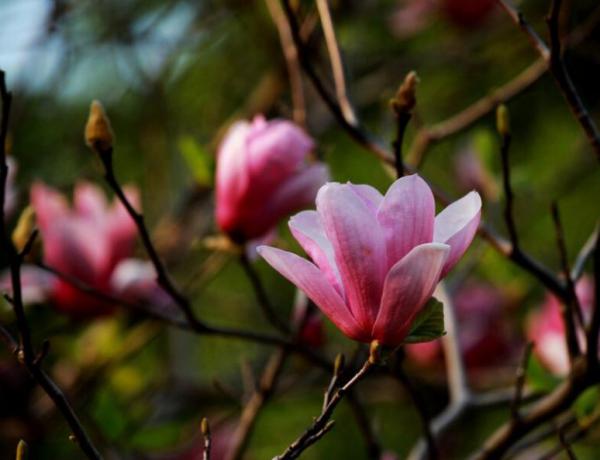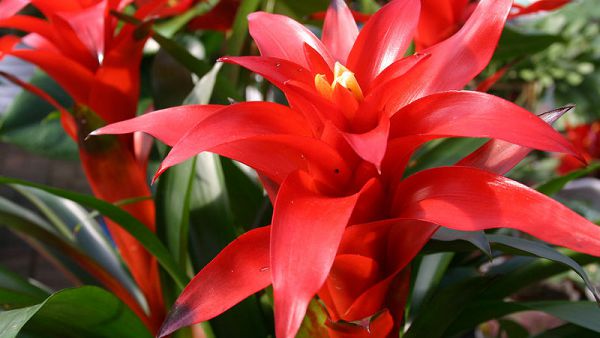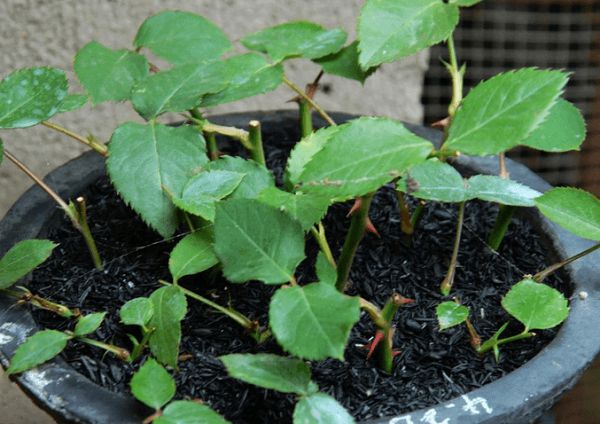When does purple magnolia blossom?

Purple magnolia usually blossoms from March to April, the flowers of purple magnolia are gorgeous and pleasant, fragrant and elegant, isolated or cluster planting are very beautiful, graceful, luxuriant flowers, is an excellent garden, street greening plants, for China has more than 2000 years of history of traditional flowers and traditional Chinese medicine.
Cultivation methods of Magnolia paniculata
1. Potted soil: Magnolia prefers loose and fertile acidic and slightly acidic soil. Rotten leaf soil and vegetable garden soil can be mixed and cultivated in the same amount, and 50 to 150 grams of bone powder or nitrogen, phosphorus and potassium compound fertilizer can be added to the soil. The basin should be a little deeper and bigger, and some hard plastic foam blocks should be put at the bottom of the basin to enhance air permeability and drainage and prevent rotting roots. Turn the pot and change the soil once a year or every other year after flowering, keeping the persistent soil from 1x2 to 1x3.
2. Water and fertilizer: Magnolia likes to be moist and afraid of waterlogging, so timely and appropriate watering is very important. When the Beginning of Spring blossoms, the potted soil remains moist but not wet; after flowering, the potted soil remains moist but not waterlogged; after defoliation, the potted soil remains moist but not dry. Do not be dry or waterlogging at any time, especially in the rainy season.
Magnolia likes fertilizer. Fertilization should seize the two key opportunities of 2 months before flowering and 5 months after flowering. Nitrogen, phosphorus and potassium compound fertilizer should be applied once every ten days. The former makes buds expand and flowers bloom, while the latter promotes more pregnant buds and more flowers in the next spring. When the leaves fall in winter, the fertilizer mainly composed of phosphorus and potassium is applied once to enhance its ability of resisting cold and overwintering, with little or no application in the rest of the time. Avoid applying nitrogen fertilizer alone.
3. Light and temperature: purple magnolia likes light and is placed in sunny courtyards and rooftop gardens. The sun grows vigorously and luxuriantly. Although it can grow under semi-shady conditions, it is thinner and has fewer flowers, while if it is overcast, there are no flowers. It is hardy and can survive the winter outdoors in Beijing and its southern areas.
4. Pruning: the root of Magnolia mandshurica has strong sprouting and tillering ability. if it is not necessary to reproduce, cut along with the growth, and keep 3 trunk in each pot. For branches that are too tall and too long, they can be cut short just after flowering. Because of their poor healing ability, they should be coated with sulfur powder for anticorrosion after cutting, and do not prune if it is not necessary. If there is no need to leave seeds for reproduction after flowering, the residual flowers should be cut off with pedicels.
5. Reproduction: common methods of plant division, striping and sowing propagation. After flowering, combined with turning the basin to change the soil, pour out the plant, cut off the root of the sprouting daughter plant with a sharp scissors or knife, and then plant it separately. The transplant can be carried out before flowering in autumn or early spring, the seedlings are stained with mud, and the big seedlings must carry soil balls.
Fertilization was applied once before and after flowering, mainly phosphorus and potassium fertilizer. Maintain soil moisture in high temperature in summer and dry in autumn. After flowering and before sprouting new branches, dry branches, dense branches and short long branches should be cut off. Sowing, seed collection in September, sand storage in winter, spring sowing the following year, and germination 20-30 days after sowing.
Related
- Fuxing push coffee new agricultural production and marketing class: lack of small-scale processing plants
- Jujube rice field leisure farm deep ploughing Yilan for five years to create a space for organic food and play
- Nongyu Farm-A trial of organic papaya for brave women with advanced technology
- Four points for attention in the prevention and control of diseases and insect pests of edible fungi
- How to add nutrient solution to Edible Fungi
- Is there any good way to control edible fungus mites?
- Open Inoculation Technology of Edible Fungi
- Is there any clever way to use fertilizer for edible fungus in winter?
- What agents are used to kill the pathogens of edible fungi in the mushroom shed?
- Rapid drying of Edible Fungi



